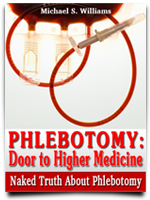 Stem cells are the building blocks of your immune system. They are the type of cells that create new growth and development. If you are sick and your doctor recommends you to undergo stem cell transplant, you can only harvest it if you have a donor.
Stem cells are the building blocks of your immune system. They are the type of cells that create new growth and development. If you are sick and your doctor recommends you to undergo stem cell transplant, you can only harvest it if you have a donor.
Stem cells in cord blood are as effective as the cells found in bone marrow. After years of investigation, doctors think cord blood stem cells might cure cancers, blood disorders, immune disorders, metabolic disorders, brain injury, cerebral palsy and type-1 diabetes.
“Do you really need to preserve your cord blood?”
This is the big question a lot of parents ask themselves. If you ask me, this is the type of question that requires decisive planning and thorough research. It’s not enough to answer it with a yes or a no because you can end up regretting your decision.
It’s true that storing cord blood is having a health insurance. You don’t know when you need it but you surely need it if your five-year-old child is diagnosed with cerebral palsy.
The question to ask yourself is: “How willing are you to bank cord blood for your child?”
American Academy of Pediatrics released an official statement and to them, there are no accurate estimates that your child needs his own stored cells. Perhaps, only one or ten children out of 1,000 will need their cord blood. Truth is – autologous (self) cord blood transplantation shows no effective effectiveness for the treatment of malignant neoplasms (abnormal growth of body tissue).
Banking a cord blood can be possible if you have the budget.
In this time of economic crisis, you must know how to prioritize your needs before your wants. Ask yourself “Is storing your newborn’s cord blood a need or a want?” If it’s your need, will you spend money to meet this need?
The cost of storing cord blood is expensive. The first year fees range from $600 to $1,840 depending on which family bank you choose and which payment plan goes well with your budget. Cord Blood Registry (CBR) is the largest and the most experienced stem cell bank in the world and its one-time payment for the first year is $2,195. Choose their monthly plan and you need to pay $61. You are also given the option to store both cord blood and cord tissue but the total first year fee amounts to $2,915.
For some, it’s not a big deal to spend $61 per month to assure the well being of your child yet, it can’t be denied banking cord is still your personal decision based on what you earned.





Cord Blood Banking Facebook
Blood Donation Twitter